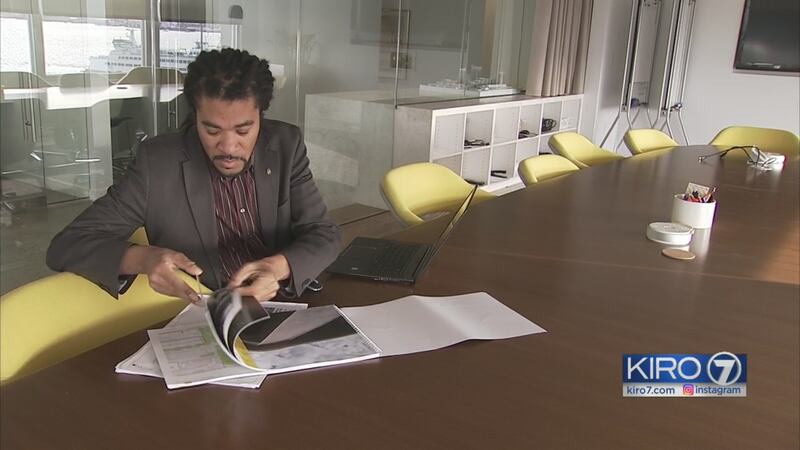SEATTLE — Finding a new job in the King County area might be easier for job seekers in 2018.
Puget Sound regional economist Anneliese Vance-Sherman said the local job market is tightening and as a result, wages are rising.
"At this point, employers are looking for their skilled labor force and having a difficult time," said Vance-Sherman. "And they have to do that, in many cases-- increase wages in order to attract the workforce that they're looking for. So now the advantage is a little bit more in the favor of job seekers."
Vance-Sherman told KIRO 7 that King County had an 11 percent unemployment rate at the height of the recession. Today, King County has an unemployment rate of 3.9 percent, with a statewide rate steadily in the 4 percent range.
Brighter future for local employees
Things are looking up for people such as Rodolfo Turla, who has struggled for years to find long-term work and financial stability, after leaving the Army in 2007.
“When I got out, I was homeless,” Turla said. “I was living out of my car.”
Turla has a four-year college degree. At one point, he worked three jobs, 72 hours a week, just to survive.
“I barely broke $30,000,” Turla said.
Eventually he discovered a new passion thanks to the biomedical engineering program at North Seattle Community College.
“I discovered this was for me,” Turla said. “I like it. I tinker around with equipment. And it helps people.”
Last year, he started working at Seattle Children’s Hospital.
“This job has given me an opportunity,” he said. “I’m a season ticket holder now with the Seahawks. This is really nice. I feel good now.”
Building on legacy
The new economy is also helping local architect Rico Quirindongo continue to follow his passion.
Six years ago, he helped launch Seattle’s largest African American-owned architecture firm in Seattle and led the redesign for the Northwest African American Museum.
While he told KIRO 7 that the company’s books were healthy at the time, the firm was forced to close in 2012.
“Honestly, it was very painful,” Quirindongo said. “I think I only recently have recovered from that.”
With the economy picking back up, Quirindongo found himself at a large local firm focused on civic work.
After surviving the economic downturn, Quirindongo proudly said, “I will die an architect.”
With construction still going at full tilt, it looks as if he likely will.
Breaking down numbers
This graph from the Washington State Department of Labor shows a dip in wages in 2008.
The line trends significantly upward, especially in the last two years.
Some of that growth can be attributed to the recent rise in minimum wage.
This year, the Washington State minimum wage was raised to $11.50 an hour. In Seattle, some minimum wage workers can earn $15 an hour. Under law, smaller companies have several years to phase in the new rate.
Industries experiencing job growth
Pedro Domingos, a computer scientist at the University of Washington and an author, told KIRO 7 that the construction and service sector jobs top the list.
“Maybe the most remarkable thing about this job comeback is that ‘blue collar’ and lower paying jobs are gaining the most right now,” Domingos said.
He theorizes the rise in salaries at the low end of the wage scale is helping bridge the economic gap.
"What's actually happening right now in the last year or so, is that inequality is decreasing," Domingos said. "Lower-paid job salaries are rising more than higher paying jobs. So this is actually really good news”
The cranes dotting Seattle’s skyline are visible evidence that the construction industry will continue to grow.
“Inequality is going down right now, and we’ll see if that continues in the future,” Domingos said. “If it does, it will be great.”
More news from KIRO 7
- Florida school shooting: What we know about the victims
- Documents: Student in school shooting plot: 'I need to get the biggest fatality number'
- How to find your King County property taxes in three quick steps
- 'A kid that's 19 shouldn't have a gun:' Student at Florida school shooting recounts tense hours
- What knocked over 100 giant trees in Olympic National Park?
Cox Media Group








